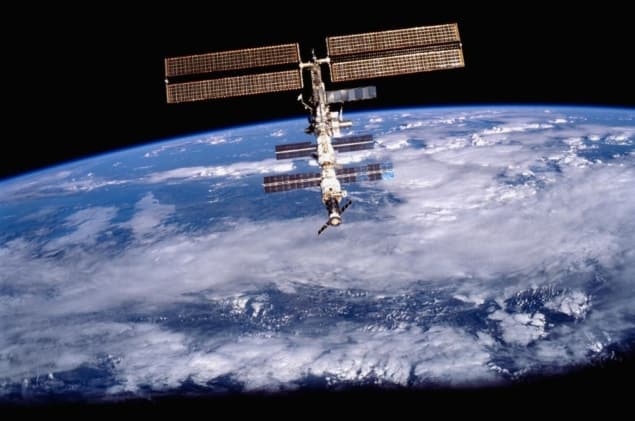MRI reveals how space travel alters the brain
Volume changes in the brain tissues of long-term visitors to the International Space Station (ISS) have been accurately measured for the first time. An international team of neuroscientists, led by Floris Wuyts at the University of Antwerp, quantified the changes after performing MRI scans on Russian cosmonauts before, shortly after, and months after their trips into space. Their findings could help to identify some previously-unforeseen risks of long-term spaceflight (N. Engl. J. Med. 10.1056/NEJMc1809011).
Microgravity can have profound effects on the bodies of astronauts spending long stints of time aboard the ISS. Most notably, the greatly reduced demand on their muscles and bones presents the danger of atrophy once they return to Earth, driving space programmes to enforce rigorous exercise regimes on their astronauts.
The cognitive effects of long-term space travel are far less understood, however. Without any significant measures to prevent damage to astronauts’ brains after their return to Earth, it is currently unknown whether prolonged stays on the ISS could result in cognitive deterioration in their later lives.
To better understand the risks involved, Wuyts’ team performed MRI scans on the brains of 10 Russian cosmonauts, with an average space-mission duration of 189 days. For each subject, the researchers performed scans both before and shortly after their flight, as well as a third scan several months later for seven of the candidates.
The approach represents a significant advance for neurological studies of astronauts. “This is the first study in which it has been possible to objectively quantify changes in brain structures following a space mission also including an extended follow-up period,” says co-author Peter zu Eulenburg at the Ludwig Maximilian University of Munich.
In particular, the team observed volume differences in each cosmonaut’s grey matter – comprising neuronal cell bodies, white matter – or nerve fibres, and cerebrospinal fluid (CSF) – which occupies the brain’s internal ventricles and the spaces between the brain and the skull.
Wuyts and colleagues found that, on average, the volume of the cosmonauts’ grey matter declined during their spaceflights, then partially recovered after seven months – although not completely. In contrast, their white matter volumes remained unchanged while in space but were greatly reduced after six months back on Earth. CSF volumes increased aboard the ISS, then continued to expand in the spaces outside the brain once back on Earth; although volumes returned almost back to normal inside the ventricles.
The neuroscientists propose that the post-flight reduction in white matter that they observed could be explained by the combined recovery of grey matter and continued expansion of CSF reducing the space available for white matter. If correct, the team’s findings suggest that the long-term changes to the brain following spaceflight could be far more unpredictable than currently realised.
“Our results point to prolonged changes in the pattern of cerebrospinal fluid circulation over a period of at least seven months following the return to Earth,” says zu Eulenburg. “However, whether or not the extensive alterations shown in the grey and the white matter lead to any changes in cognition remains unclear at present.”
So far, the only known clinical condition affecting long-term ISS visitors long after their return is a reduced eyesight – an effect Wuyts’ team now believe could be caused by an increased pressure exerted by expanded CSF on the retina. However, the researchers suspect that other, as-yet unobserved and potentially dangerous cognitive conditions could manifest long after an astronaut’s return to Earth. Wuyts and colleagues now believe a wider range of diagnostic methods will be essential in identifying and mitigating the risks of prolonged space travel.
Sam Jarman is a science writer based in the UK
6/11/2018 from physicsworld.com

Δεν υπάρχουν σχόλια:
Δημοσίευση σχολίου